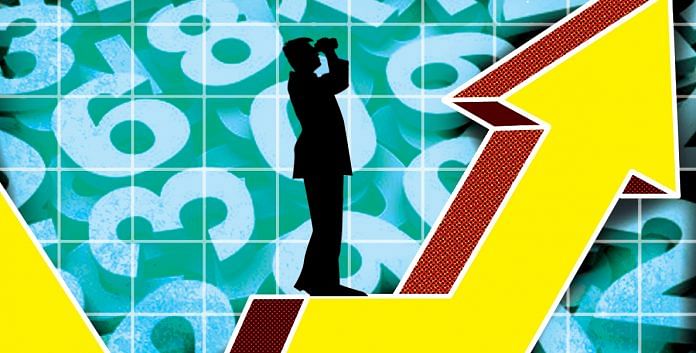India’s economy is set to grow, but at what pace is the question.
Ordinarily, quarterly economic growth of 6.3 per cent would have been nothing to write home about, in an economy that is used to averaging over seven per cent growth. But after two quarters that reported 6.1 per cent and 5.7 per cent, I think we will take 6.3 per cent for now — signalling as it does that the economy is recovering from the twin shocks of the past 12 months. This must be a huge relief for everyone. But the operative question to focus on is, where do we go from here? The short answer is: further up the growth chart. But we should be prepared for a steady rather than a sharp recovery.
That’s for four reasons. First, North Block has sent out the clear signal that it intends to stick to the fiscal deficit target of 3.2 per cent of GDP — despite a clear shortfall in non-tax revenue. Given that 90 per cent of the intended deficit spending has already taken place in the first half of the financial year, we will have to live with virtually no deficit in the second half. That means relative fiscal contraction from now on. On top of that, there is next to no chance of the Reserve Bank dropping interest rates in the rest of the year; monetary policy will remain tight — again, no policy support to economic expansion.
 Third, oil prices, at $63 per barrel, are ruling 40 per cent higher than the average for the past two years. A higher outgo on this account will depress growth in the same way that the sharp drop in oil prices a couple of years back had boosted growth to eight per cent in 2015-16. Finally, the quarterly numbers show that investment continues to be slack, and is still falling as a share of GDP.
Third, oil prices, at $63 per barrel, are ruling 40 per cent higher than the average for the past two years. A higher outgo on this account will depress growth in the same way that the sharp drop in oil prices a couple of years back had boosted growth to eight per cent in 2015-16. Finally, the quarterly numbers show that investment continues to be slack, and is still falling as a share of GDP.
Despite these four factors, it is a fair bet that growth will cross seven per cent in the next two quarters — capitalising in part on the effect of a low base, but also building on the fresh momentum that is evident in manufacturing and exports. The year as a whole could end with growth in the region of 6.5 per cent, give or take a bit. Assuming seven-plus per cent growth in 2018-19, Prime Minister Narendra Modi’s five years should deliver average growth of about 7.3 per cent — fractionally short of what Manmohan Singh delivered in his second innings.
On the positive side, the global economy and global trade have recovered, providing the setting for domestic expansion. If the government banks get recapitalised, they will be in a position to start lending again — provided new projects are presented to them. The problem of debt-laden corporate balance sheets will persist for a while longer but, with the bankruptcy law having been written into the books, the future should see more careful behaviour by company promoters. A good credit culture can only help the economy, since it will cause less dead investment.
There comes the inevitable question: Can we look ahead to eight per cent growth on a sustained basis? On present reckoning, it could happen in the recovery phase of the business cycle (we’ve seen it in three of the last nine years). But it is doubtful if that pace can be sustained through the cycle, although optimists like Mukesh Ambani predict much better. The only period when India did see sustained growth of more than eight per cent was in 2003-08, when the global economy was on fire and India’s exports soared. Bear in mind also that domestic savings and investment rates today are well below the levels that prevailed then.
Yet, the economy needs to do significantly better than its 15-year average of 7.5 per cent growth, creditable as it is — in order, most importantly, to offer a solution to the jobs crisis. The take-away message has to be that we need more reform, without the shocks.
By Special Arrangement with Business Standard






